All products featured are independently chosen by us. However, SoundGuys may receive a commission on orders placed through its retail links. See our ethics statement.
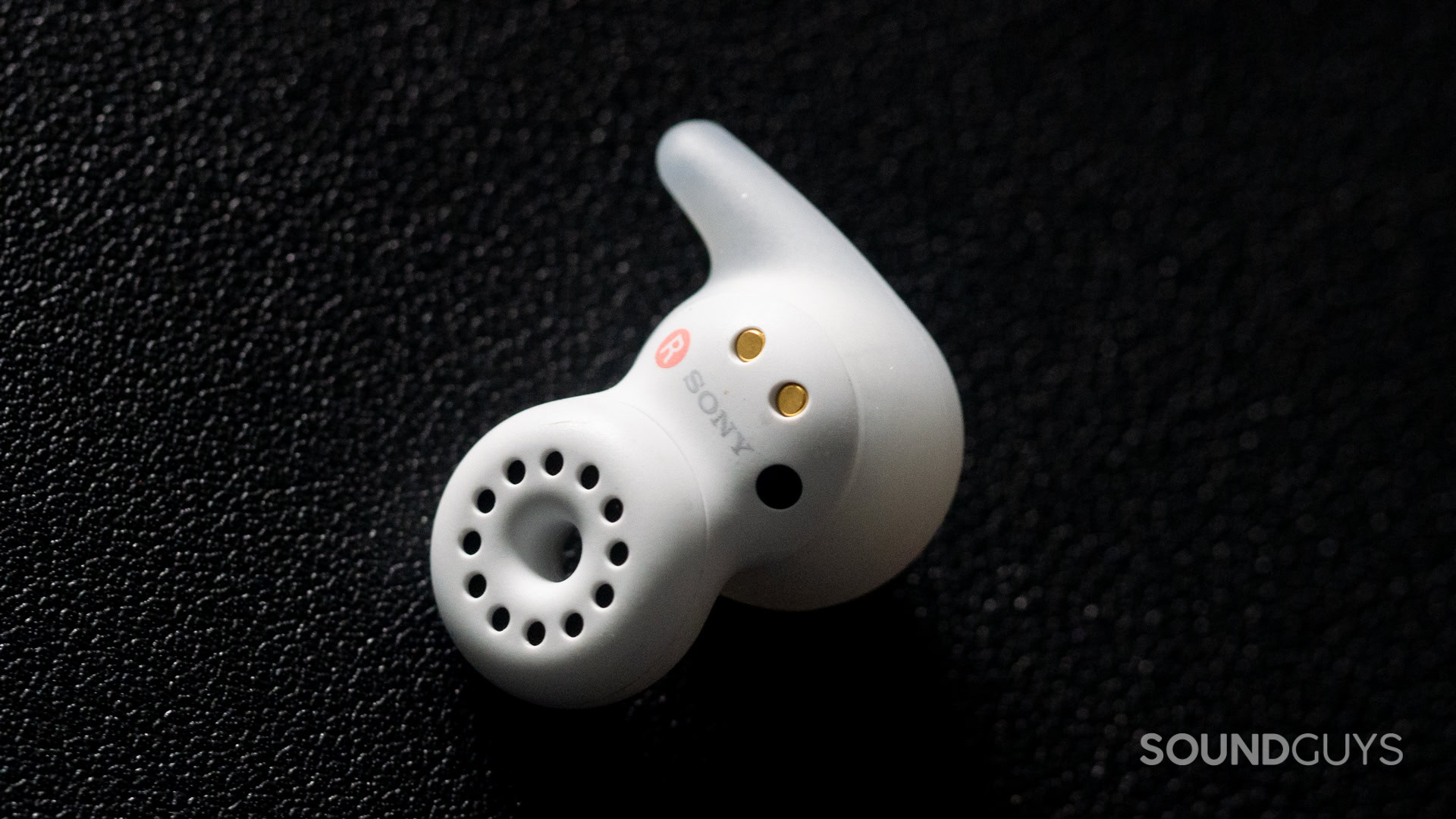
Sony LinkBuds Open review: an interesting sequel
April 8, 2025
Sony LinkBuds Open
Open earbuds are starting to see their day in the sun, and one of the more high-profile options was Sony’s original LinkBuds. But how do the sequels stack up? I had a few days to give them a whirl, so let’s listen in.
- This article was updated on April 8, 2025, to update the FAQ to a new system.
- Editor’s note: this article was published on October 7, 2025.
The Sony LinkBuds Open are for those who want to hear the world around them, unabated by something blocking your ear canal.
What’s it like to use Sony LinkBuds Open?
Using the Sony LinkBuds Open is an interesting experience, even if you’re used to unsealed or open earbuds like AirPods and the Nothing Ear (Open). I say that because they definitely blur the line a lot more than either of those products do between merely unsealed and open earbuds. On the one hand, the earbuds let in just about all noise around you, but on the other, they still sit in your ears right in front of your ear canal.
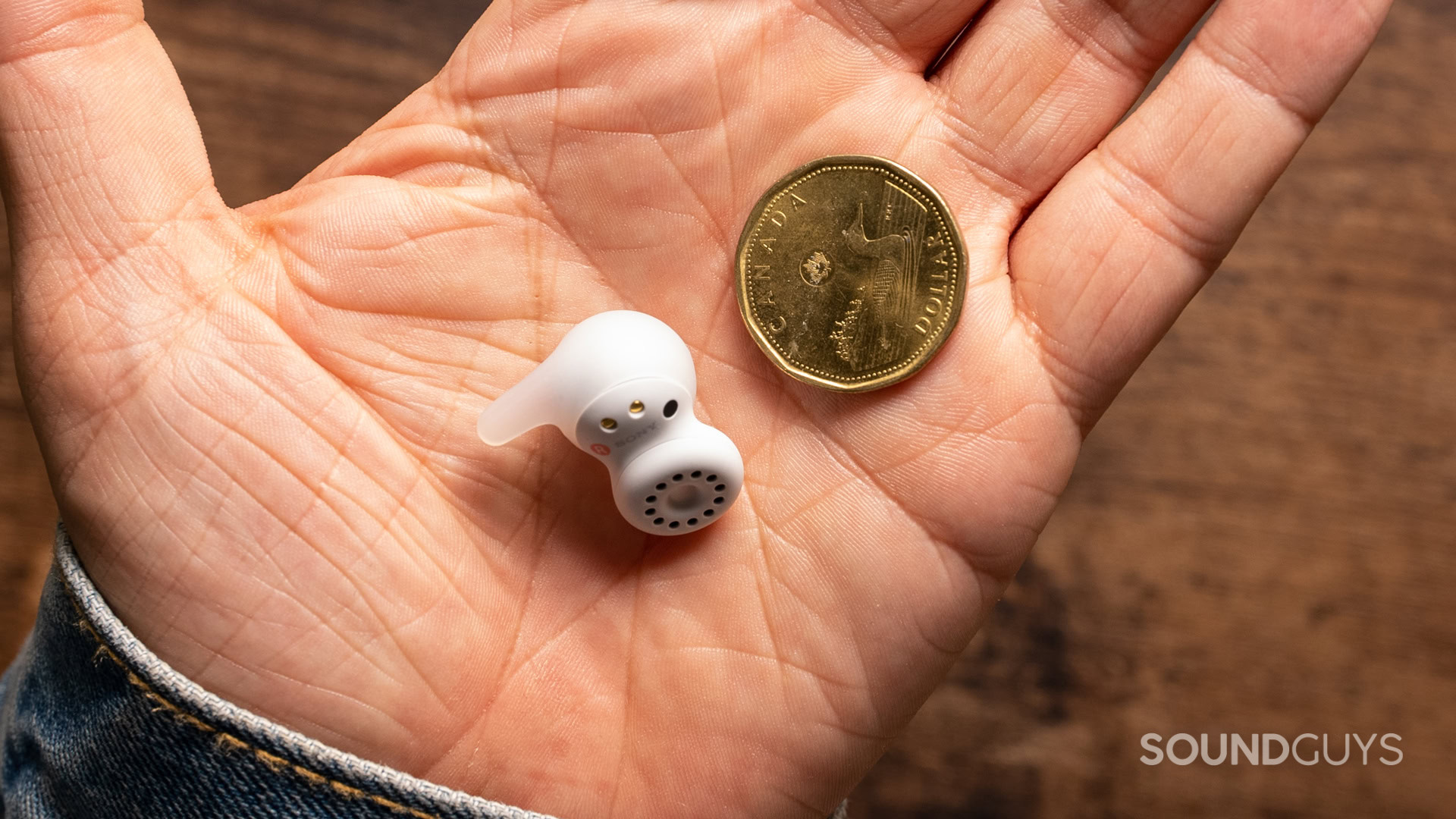
To hold these earbuds in place, Sony added a very flimsy rubber ear fin. However, having a low amount of resistance allows the fin to fit more comfortably to your ear. By having this secondary method to secure the earbuds in your pinnae, even a really bulbous earbud stands a decent chance of fitting you even if it’s not the ideal shape for your ear. I found this to be comfortable, though I was constantly afraid of the earbuds rocketing out should I move quickly — they didn’t, but the feeling of loose-fitting earbuds is something I’ll never get used to.
The earbuds do not have an ingress protection rating, but they do have what Sony is calling “IPX4 equivalent” moisture protection. If true, this would mean the earbuds could take incidental moisture from sweat or rain and keep kicking, making them a decent choice for workouts.

When it’s time to recharge, the Sony LinkBuds Open come with a very small charging case, clad in a marble-patterned top. The back of the case has a USB-C port for charging, and does not support wireless charging.
Controlling the Sony LinkBuds Open is an interesting thing, as you can use either the touch controls, or the wide area tap. Said control mode allows you to tap your skin near the earbud instead of potentially dislodging the earbud itself.
| Input | Left earbud | Right earbud |
|---|---|---|
| Input Double tap | Left earbud Play / pause | Right earbud Play / pause |
| Input Triple tap | Left earbud Track forward | Right earbud Track forward |
| Input Quadruple tap | Left earbud Lower volume | Right earbud Raise volume |
Should you use the Sony Sound Connect app for the Sony LinkBuds Open?
In order to make the most of the Sony LinkBuds Open, you’ll need to install the Sony Sound Connect app for the earbuds. Though installing extra utilities on your phone can make some squeamish for totally-understandable reasons, you’ll want the latest firmware, and the ability to customize your sound a bit with the equalizer if you struggle to get the results you want.
Additionally, installing the app unlocks a few extra features, like Sony 360 Reality Audio with head tracking, answering or rejecting calls with a nod and head shake, adjusting the wide area tap sensitivity, and toggling sound priority modes. If you’re hoping to use the Sony LinkBuds Open in a low-latency mode, toggling the LE Audio will reduce latency should your phone support it.
How do the Sony LinkBuds Open connect?
The Sony LinkBuds Open connect to their source devices via Bluetooth 5.3 over SBC, AAC, and LC3. I’m happy to see the LC3 here, as that means that the earbuds are fully embracing the advantages of LE audio, such as minimizing latency on Android devices.
...the earbuds are fully embracing the advantages of LE audio
If you’re liable to swap products often, the Sony LinkBuds Open support Bluetooth Multipoint, and you can manage your connected devices through the app. I didn’t have any trouble swapping between devices in the lab, and that was a nice departure from other recent devices. In fact, I was far less frustrated using the Sony LinkBuds Open than I was my old headphones, as I didn’t have to pair and repair every time I switched devices. Though Multipoint is everywhere nowadays, there are definitely some products that do it better than others.
If you aren’t able to use Fast Pair or Swift Pair, you can always pair the Sony LinkBuds Open manually.
- On your source device, enable Bluetooth and navigate to the menu.
- With the Sony LinkBuds Open in the charging case, depress the pairing button on the back until the blue light starts “breathing.”
- Hit “Scan” on the Bluetooth menu of the source device.
- Select the “Sony LinkBuds Open” in the list of available devices.
How long does the Sony LinkBuds Open battery last?
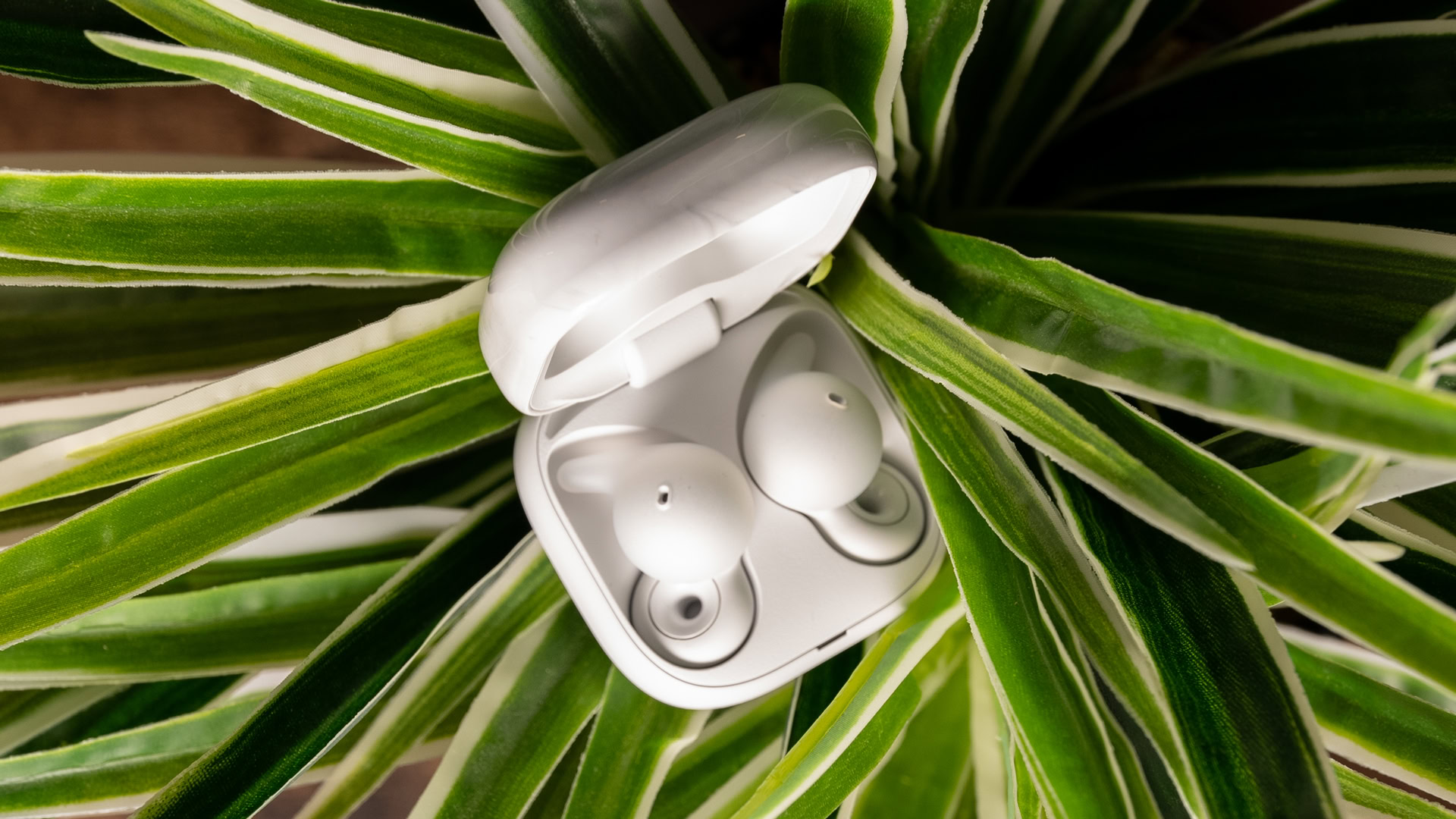
Subjecting the Sony LinkBuds Open to our standardized battery endurance gantlet, the earbuds were able to last 9 hours and 30 minutes of playback time. This is an outstanding result, and we don’t often see earbuds last this long — even if it’s not unheard of. Though you’re probably not going to be listening to these for ultra-long periods of time, it is nice to know that you should be able to listen at a safe level for long periods of time.
Sony claims a three-minute charge will grant you up to 60 minutes of playback time.
How well do the Sony LinkBuds Open block out noise?
Loading chart ...
The Sony LinkBuds Open are designed not to block out noise, so it shouldn’t be terribly surprising that they don’t isolate their listeners much. There’s a little bit of noise softened in the highest octaves of your hearing, but there’s a low likelihood that you’ll notice or care much. That’s really not the point of open earbuds like the Sony LinkBuds Open.
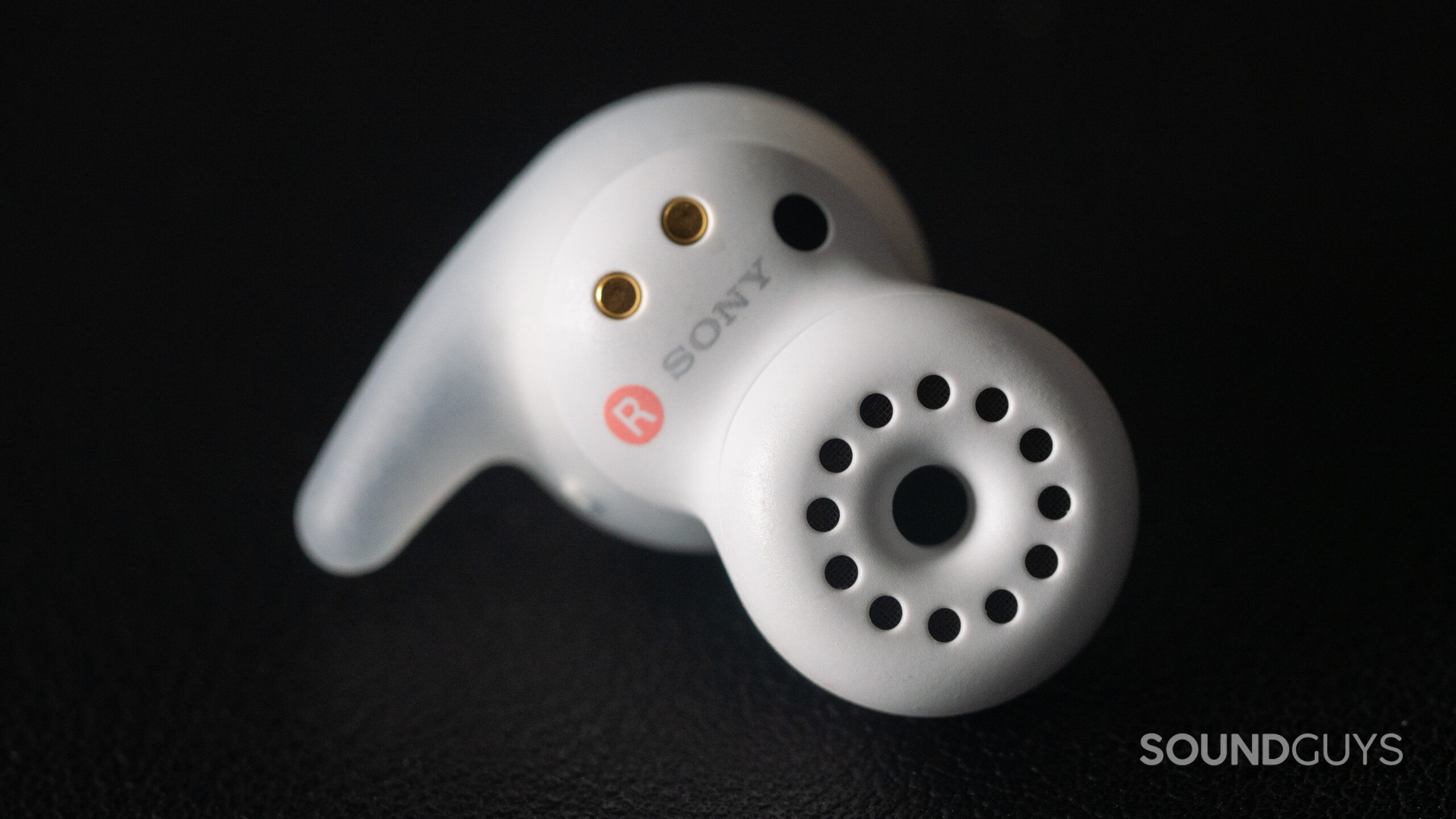
This is very good for activities where you need to hear the world around you, say, biking or interacting with other people. But it’s very poor for listening to music in a city or on a commute. As long as you understand that outside noise will be a constant nuisance, you can adjust your expectations accordingly.
How do the Sony LinkBuds Open sound?
Open earbuds struggle to meet the needs of more picky listeners. However, these earbuds should sound fine enough compared to the rest of the open pack.
Reviewer’s notes
Listening to open earbuds is pleasant until it isn’t, and I found the experience to be far from my cup of tea at places like the coffee shop or walking on the street. Sure, the earbuds allowed me to hold conversations without having to use a transparency mode, but it came at the expense of not being able to shut anything out. I hate that so very, very much.
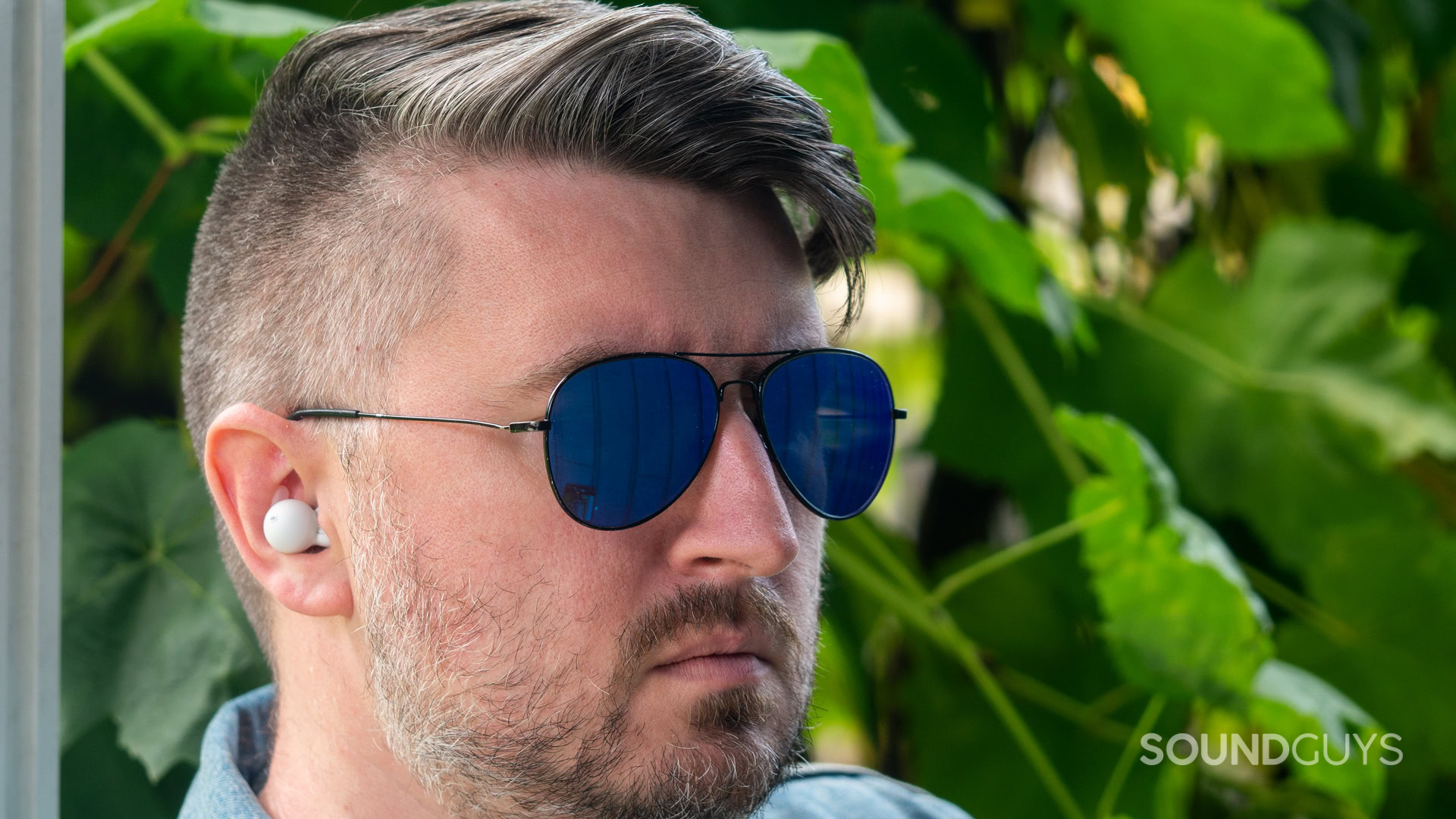
Thing is, though, that I’m not the target demographic of these earbuds, and I don’t remember a time where I ever was. The original inspiration for the first LinkBuds was younger listeners who liked to be able to talk to others while having their earbuds in, and Sony was obviously onto something with that design. It’s probably better to think of these not as earbuds, but as little Bluetooth speakers that don’t infuriate everyone around you when you listen to them in public. While I like that idea, I found that my natural inclination to turn the volume up to hear my music was something I fear most won’t think twice about.
Open earbuds have been exploding in popularity lately, so clearly, they have utility for activities like listening to music while paying attention to your surroundings, much like bone-conduction headsets. But when it comes to audio quality, there’s a certain level of expected tradeoffs when it comes to the style. For example, sub-bass is often nonexistent, and bass, too is often impacted in a way that can sometimes make the treble comparatively louder than you might expect. You’ll definitely hear this in snare hits that sound really “off” as some of the sound is underemphasized, and the highest parts of the sound are quite loud. You’ll also have extreme difficulty hearing your music in the presence of noise, as indicated above.
In the app, you can toggle something called the “background music effect” which attempts to spatialize your audio in three different modes. Essentially, to make your music sound like it’s coming from one of three different environments (nearby, your room, a cafe). It works quite well, and if you want the illusion of listening to speakers instead of your earbuds, absolutely give that a whirl.
Objective Measurements
These issues are true for the Sony LinkBuds Open, as you can see below. These earbuds do not fit our preference curve very well at all! But that’s okay, they’re still better than the earbuds they replace, and on top of that, meeting a preference curve is not the point of these earbuds.
Loading chart ...
What is a little strange is the overemphasis in the highs. However, this shouldn’t make things grating, just try to keep your volume in check. If you listen too loudly, it could be more annoying over time — something that you may have difficulty doing anyway. In the lab, I found that the max volume of these earbuds was a little low, but that’s not a bad thing in my book.
You will find that much of your music will end up taking a back seat when there’s a lot of outside noise around you. I often like working out of a local coffee shop with headphones on, but in this case I wasn’t able to stay long — the area was just that loud. As an aside, I wasn’t aware that there’s a cottage industry to make coffee shop covers of songs that definitely shouldn’t be covered, so that was a fun discovery.
Multi-Dimensional Audio Quality Scores (MDAQS)
The chart below shows how the sound of the Sony LinkBuds Open was assessed by the Multi-Dimensional Audio Quality Score (MDAQS) algorithm from HEAD acoustics.
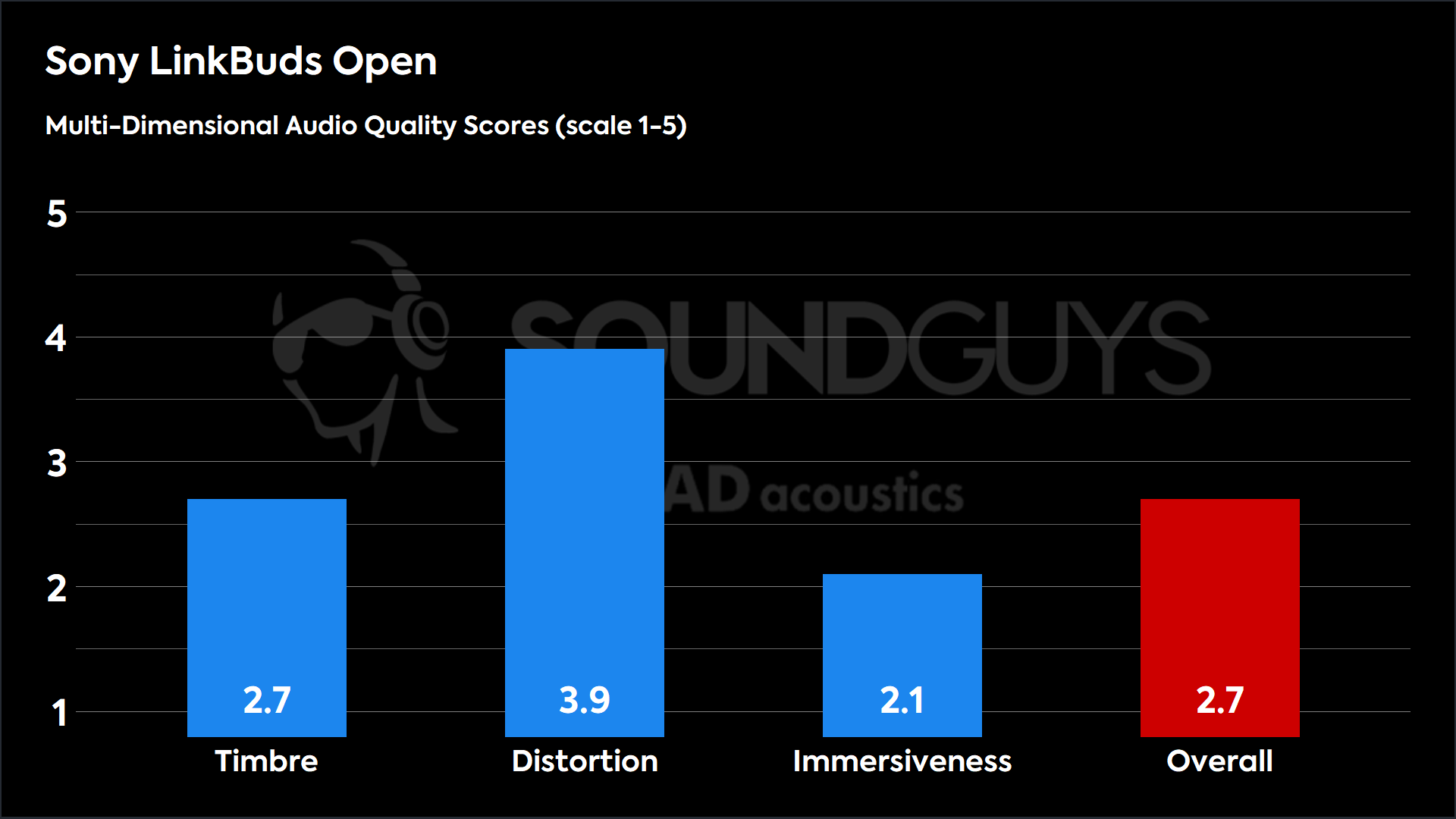
With an overall mean opinion score (MOS) of 2.7, most people will find the sound of the Sony LinkBuds Open a little lacking, but that’s honestly pretty common in this product type. In context, there are only a handful of open-ear earbuds that score above a 3 in this regard, so this result is unsurprising. Personally, I think this is a little harsh, but a lack of bass really hurts when it comes to these things.
In comparison to the high-water mark of open earbuds, the Sony LinkBuds Open stack up decently, but definitely a bit behind the Nothing Ear (Open). Our current average MOS-Overall of open earbuds is 2.9, so the LinkBuds Open are right in the middle of the pack.
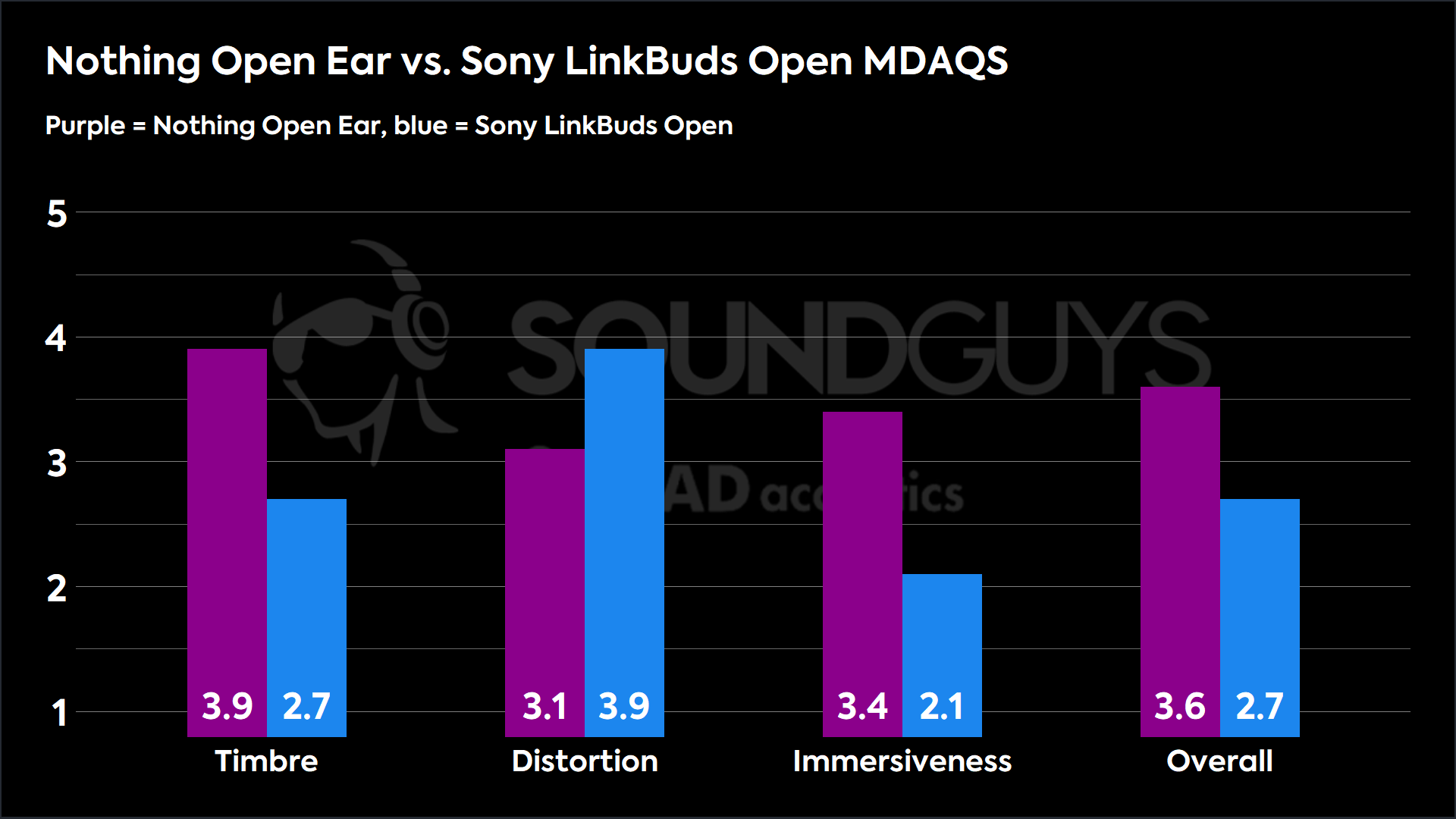
But to really underscore how much you should be tempering your expectations, Bose’s $300 option scores “poorly” as well here. Is the audio that bad? Depends on who you ask, but it’s just one of those things where the tech hasn’t overcome notable shortcomings yet, so it may be a while before we see open earbuds that can truly compete with their TWS brethren in the sound quality department.
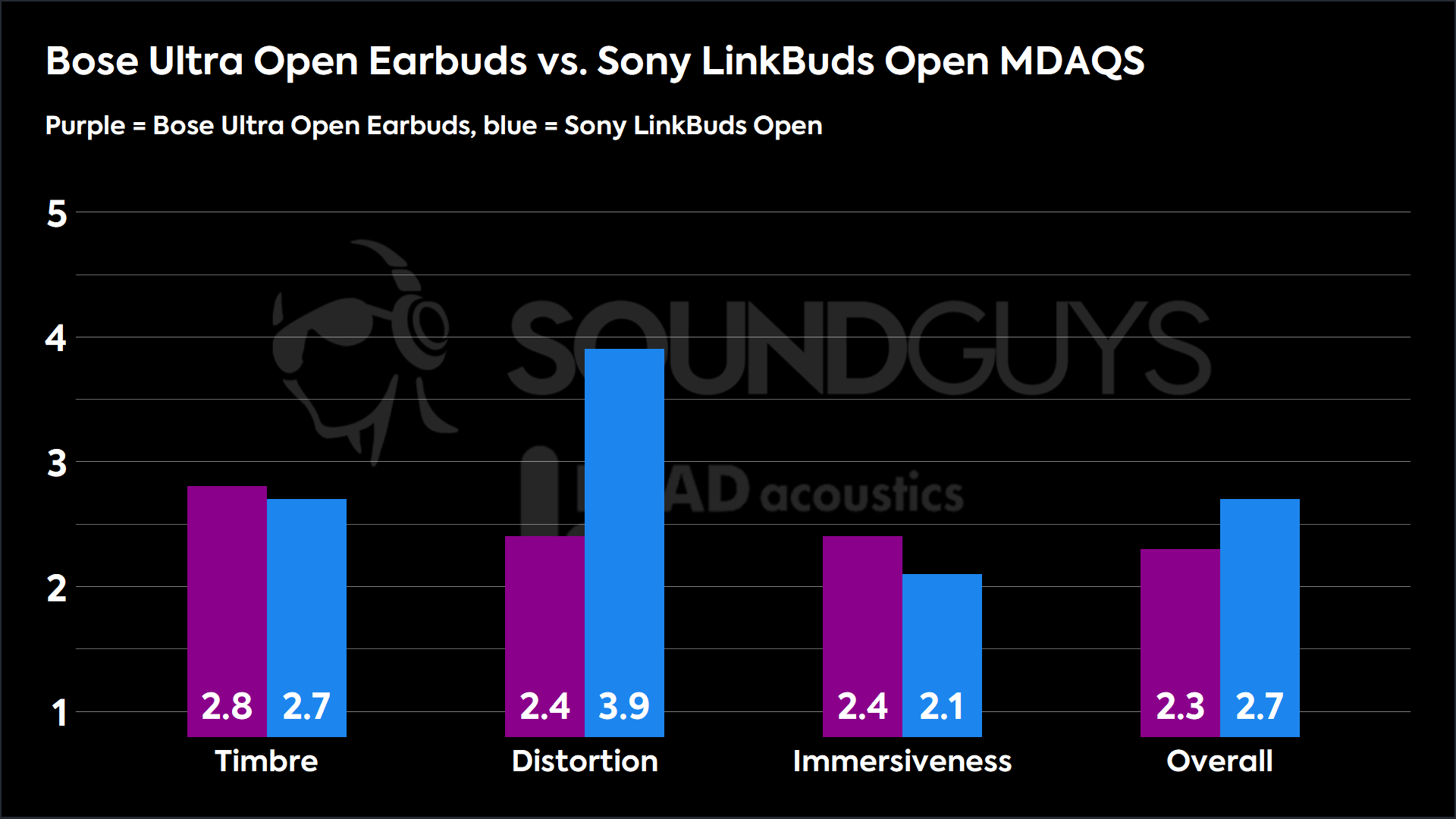
- Timbre (MOS-T) represents how faithfully the headphones reproduce the frequency spectrum and temporal resolution (timing information).
- Distortion (MOS-D) represents non-linearities and added noise: higher scores mean cleaner reproduction.
- Immersiveness (MOS-I) represents perceived source width and positioning: how well virtual sound sources are defined in three-dimensional space.
Can you use the Sony LinkBuds Open for phone calls?
The Sony LinkBuds Open are able to handle calls like most other wireless earbuds, though the results are a bit mixed. I encourage you not to make a complete judgment on just the ideal sample below, but to listen how the recording sounds in the real-world examples sound.
Sony LinkBuds Open microphone demo (Ideal conditions):
How does the microphone sound to you?
Sony LinkBuds Open microphone demo (Office conditions):
Sony LinkBuds Open microphone demo (Street conditions):
Sony LinkBuds Open microphone demo (Windy conditions):
Sony LinkBuds Open microphone demo (Reverberant space):
The mic is a little on the crummy side, but it’s not like you were going to be doing any serious recording projects with the earbuds. These are particularly susceptible to wind.
Should you buy the Sony LinkBuds Open?
If you find that you make extreme use of transparency mode, or you find yourself in situations where you need to hear the world around you at all times, a set of open earbuds like the Sony LinkBuds Open is a good choice. Just remember that all open earbuds struggle in the presence of noise, and their semi-in ear design can be tough to fit. Still, it’s a clever design with an undeniable appeal. The creative controls and features make for an interesting experience, and the use of LC3 to reduce latency also is a very nice future-proofing feature. I’d like to see more earbuds follow this path, and it’s important to note products that offer genuinely cool features.

Our review of the Sony LinkBuds family shows an initial launch cadence in early to mid-2022, followed by two launches in October 2024: the Sony LinkBuds Fit and Sony LinkBuds Open. While the first two products appeared within a few months of each other, there was a gap of over two years before the next set of models appeared close together, both in October 2024. Based on this recent pattern, it appears Sony may be inclined towards grouping product launches together and favoring releases later in the year. With two launches occurring October last year and none so far in 2025, our best expert forecast is that the next Sony LinkBuds product is most likely to arrive in the latter part of 2025, likely in line with Sony’s apparent preference for autumn launches. We will continue to gather reliable information to improve this prediction as more data becomes available.
Open earbuds like the Sony LinkBuds Open are not the best fit for those who primarily need their earbuds for commuting, as they don’t attenuate noise very well by design. So if you find yourself wanting active noise canceling or less noise, you’re going to want to keep looking.
What should you get instead of the Sony LinkBuds Open?
Open earbuds like the Sony LinkBuds Open are having their heyday, and there’s no shortage of decent options to choose from. For example, the Nothing Ear (Open) ($149 at Amazon) is very well-liked by my colleague Dave Carr, and there are even other options like bone-conduction headsets that offer similar capabilities without occluding the ear at all.
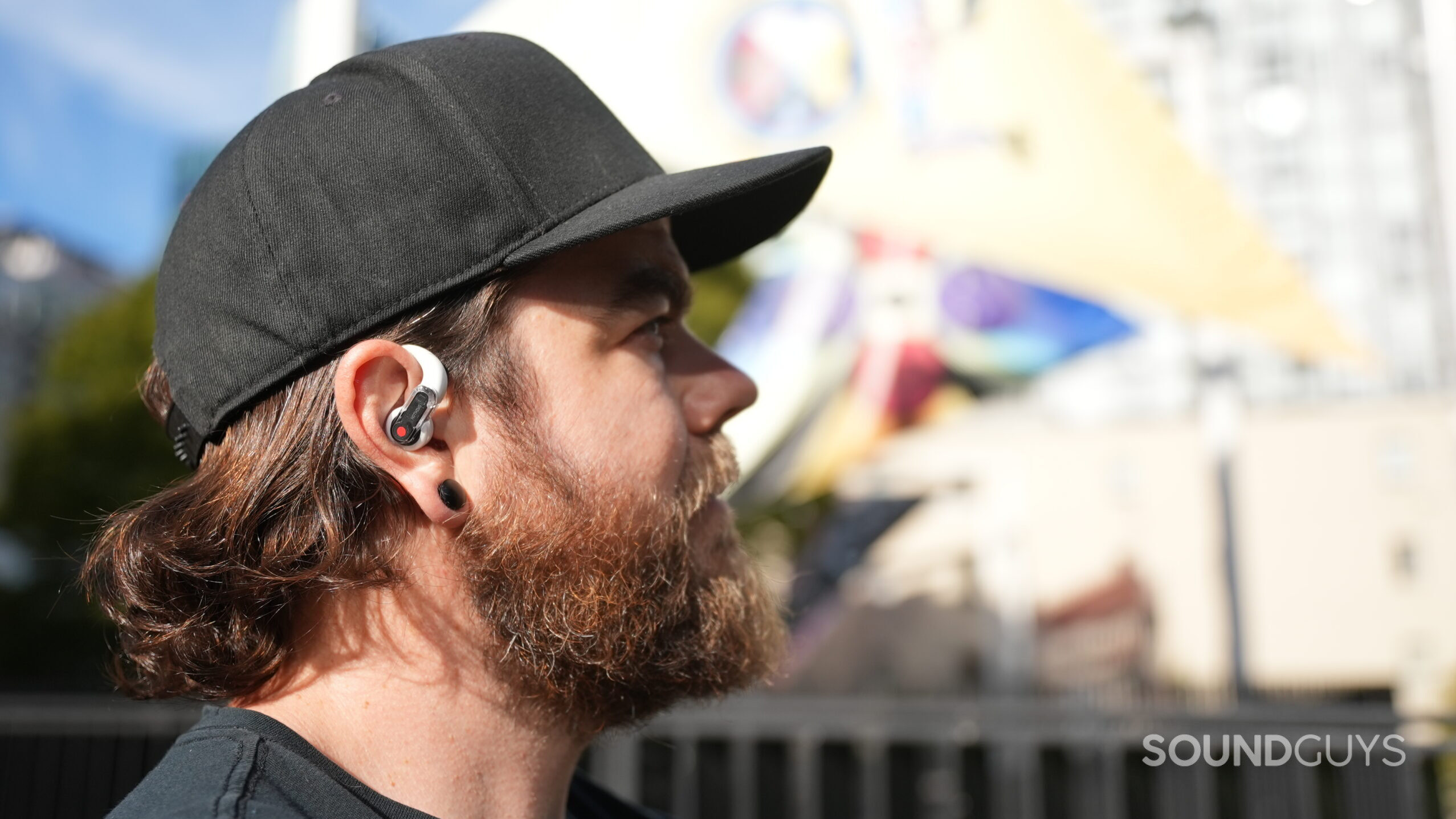
I’m not personally a fan of Bose’s open earbuds ($299 at Amazon), but there has been a small but dedicated fanbase of these products online. Beyerdynamic, has its own open earbuds, the VERIO 200 ($219.99 at Amazon), that perform fairly well.
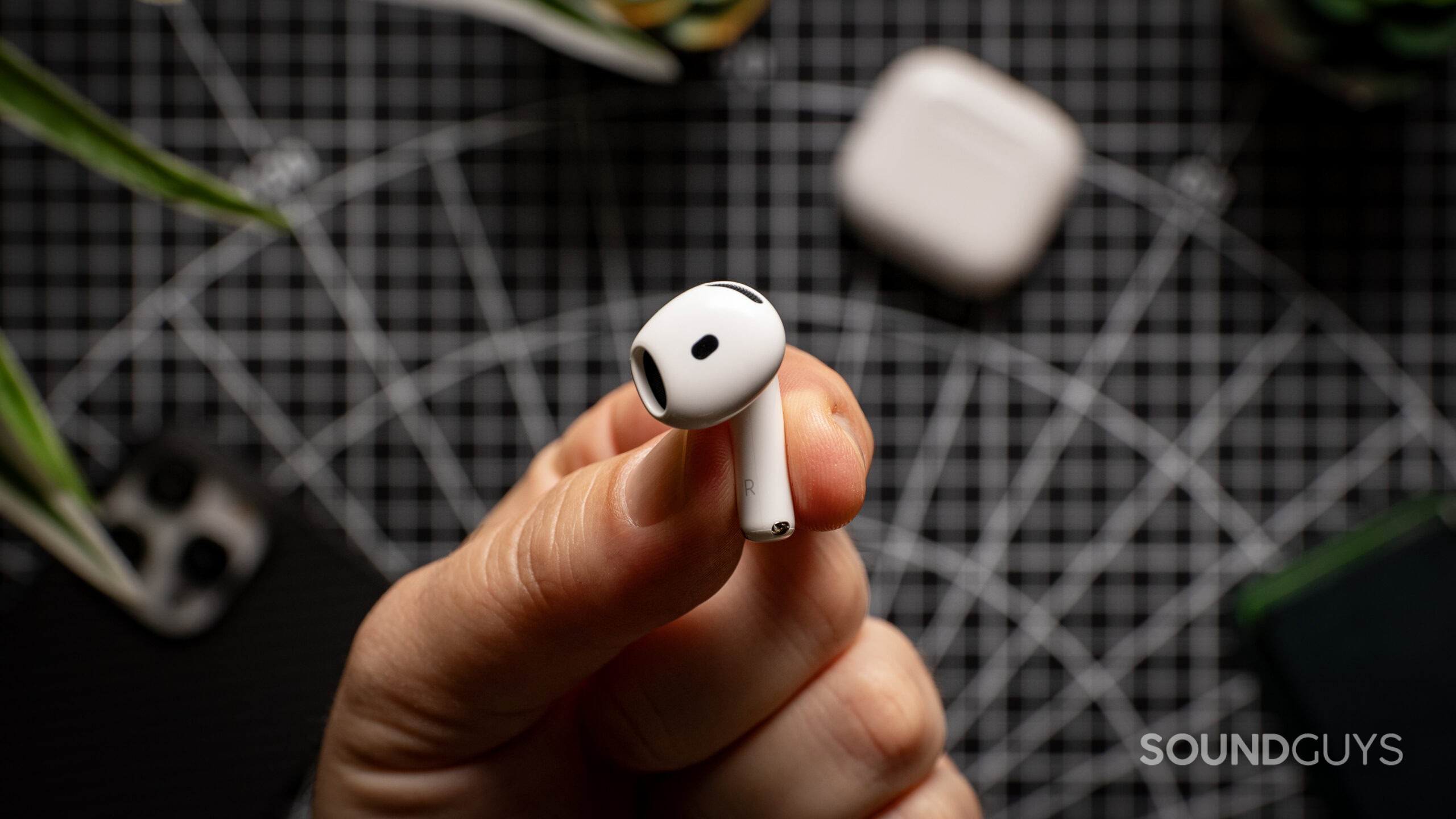
Of course, if you find yourself swapping between the need for open earbuds and ANC, you’re going to want something with a good transparency mode like the Apple AirPods 4 with Active Noise Cancellation ($179.99 at Amazon). Of course, these earbuds don’t have a secondary fit stabilizer like the LinkBuds Open do, so there’s not much that can be done if they don’t fit you.
Frequently asked questions
No.
No. In fact: quite the opposite.
Yes. The moisture resistance along with the decent fit and ability to hear your surroundings during use makes the Sony LinkBuds Open a good workout buddy.
Yes.
Yes.
Yes.
Thank you for being part of our community. Read our Comment Policy before posting.